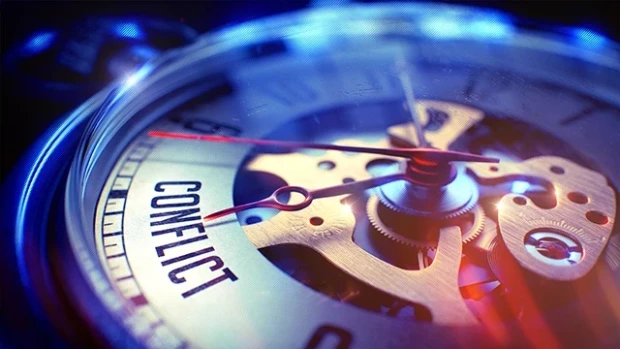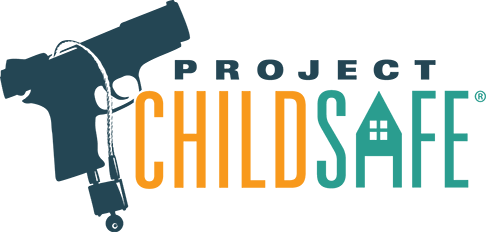Search
Cart
There are no items in your cart.
Login
Street Smarts Over Firepower: Why Armed Citizens Must Prioritize Conflict Avoidance

Conflict, in all its forms, is a natural part of human interaction, particularly in public and unfamiliar environments. The management of conflict, whether through avoidance or resolution, forms a significant part of our day-to-day experiences outside of the safety and familiarity of our homes.
While both conflict resolution and conflict avoidance have their place and value, this article presents an argument favoring conflict avoidance over conflict resolution when navigating public spaces. We will particularly emphasize the importance of situational awareness. The critical perspective here is that of lawful firearm users who choose to carry outside their homes. For these individuals, shifting from a conflict resolution mindset to one of conflict avoidance is not optional—it's a fundamental responsibility.
Conflict Resolution
Conflict resolution is a process through which disagreements and disputes are addressed and solved. The goal is to find a solution that everyone involved in the conflict can agree upon, essentially transforming a win-lose situation into a win-win one. Techniques used in conflict resolution often include negotiation, mediation, diplomacy, dialogue, and sometimes legal actions.
Some common conflict resolution strategies include:
Collaborating: This involves identifying the needs of all parties involved and finding a solution that satisfies everyone.
Compromising: This approach requires each party to give up something to reach an agreement.
Accommodating: One party willingly gives in to the needs of the other to maintain harmony.
Competing: This strategy involves one party pushing for their desired outcome regardless of the other party's needs. However, it's important to note that this strategy, while potentially effective in certain situations, can also damage relationships and create resentment if used inappropriately or excessively. Therefore, it should be used judiciously and typically when all other more collaborative methods have failed or are inappropriate for the situation.
Each of these strategies can be effective in different situations, and a well-rounded conflict resolver will be familiar with and capable of using each one as the situation demands. However, while these strategies can be useful for resolving conflicts once they've arisen, an even better approach might be to prevent the conflict from occurring in the first place. This is where conflict avoidance comes in.
Conflict Avoidance
Conflict avoidance, on the other hand, entails proactively circumventing disagreements or disputes from emerging in the first place. The intention behind this strategy is to prevent the occurrence of conflict situations. Techniques include effective communication, active listening, empathy, and most significantly, situational awareness.
Conflict avoidance strategies include:
1. Open and Clear Communication: A lack of communication or misunderstandings often lead to conflict. Ensuring that communication is clear, transparent, and consistent can help prevent misunderstandings from escalating.
2. Active Listening: This involves genuinely paying attention to what someone is saying, seeking to understand their perspective, and validating their feelings.
3. Empathy: This entails understanding and sharing the feelings of others. It can help prevent conflict by building stronger, more understanding relationships.
4. Situational Awareness: This is the process of being aware of what is happening around you in terms of where you are, where you're supposed to be, and whether anyone or anything around you is a threat to your health and safety.
Conflict Avoidance and Situational Awareness: Essential for Firearm Carriers
For lawful firearm carriers navigating public spaces, the preference for conflict avoidance over conflict resolution becomes paramount. Situational awareness—a critical component of conflict avoidance—plays a central role. The goal for a responsible firearm carrier in a public setting is not to be in a position to use their weapon but to avoid any such situation that might necessitate it.
Situational awareness involves constantly evaluating your environment for potential threats and making decisions to minimize exposure to those threats. It encourages early detection of potential conflict, allowing a person to steer clear before it escalates. This is crucial for anyone carrying a firearm. The presence of a firearm escalates any conflict situation, and the firearm user becomes responsible for preventing that escalation. This is why the conflict avoidance strategy—specifically situational awareness—is considered a mandatory psychological competency for these individuals.
Why Conflict Avoidance Is Preferable
While conflict resolution strategies are necessary and useful in many contexts, when in public and unfamiliar environments, the perspective necessarily shifts to one of conflict avoidance. This is especially crucial for those who carry firearms outside their homes, who bear a heightened level of responsibility and potential consequences.
Conflict resolution, while important, inherently accepts that conflict is present. Conversely, conflict avoidance seeks to eliminate the existence of the conflict entirely. Given that the ideal scenario, especially in public settings, is the absence of conflict, it follows that conflict avoidance is generally a preferred approach.
However, it's crucial to note that this doesn't mean one should never confront issues or shirk from necessary disagreements. Conflict avoidance is not about turning a blind eye to problems or denying their existence; rather, it's about anticipating potential conflicts and addressing them before they escalate. This is especially crucial for firearm carriers in public spaces, who bear a heightened level of responsibility and potential consequences.
In the context of carrying firearms in public, conflict resolution would mean the situation has escalated to a level that might necessitate the use of the weapon, which is inherently dangerous and always the last resort. Conflict avoidance, utilizing the tool of situational awareness, emphasizes the importance of preventing such escalation from happening at all. It promotes safer environments and can reduce the chance of regrettable incidents.
Situational Awareness: An Essential Skill
The fundamental importance of situational awareness cannot be overstated. It is a skill that encourages understanding the broader context of your environment, noting changes, identifying potential threats, and making informed decisions to evade possible conflicts. It is not just about understanding the situation but also predicting possible future scenarios based on current dynamics.
Situational awareness involves three levels:
1. Perception of Elements in Current Situation: This is the basic level where one identifies, processes, and comprehends the critical elements in the environment.
2. Comprehension of the Current Situation: This involves understanding what the perceived elements mean.
3. Projection of Future Status: Based on the information perceived and understood, this level entails predicting how the situation could evolve and taking preventive action accordingly.
All of these levels combined contribute to avoiding conflict altogether, making it a necessary skill for those in sensitive roles, like lawful firearm carriers navigating public spaces.
.
While conflict resolution strategies are necessary and useful in many contexts, when navigating public and unfamiliar environments, the perspective necessarily shifts to one of conflict avoidance. This is especially crucial for those who carry firearms outside their homes, who bear a heightened level of responsibility and potential consequences.
By promoting open and clear communication, active listening, empathy, and, most significantly, situational awareness, the goal becomes not merely resolving conflicts, but preventing them from arising in the first place.
The consequences of not effectively avoiding conflict can be catastrophic for those carrying firearms in public. Thus, prioritizing conflict avoidance and the psychological competency of situational awareness is essential. It forms the backbone of responsible behavior, ensuring the safety of the individual and the broader community when navigating public spaces. Ultimately, it is about shifting from a reactive mindset of conflict resolution to a proactive, preventive attitude of conflict avoidance.
NEWSLETTER










Leave a Comment